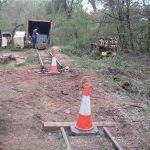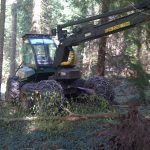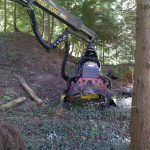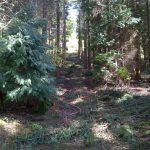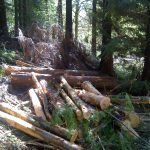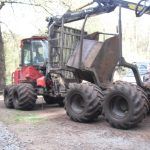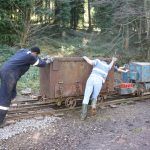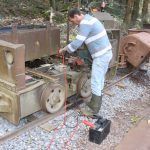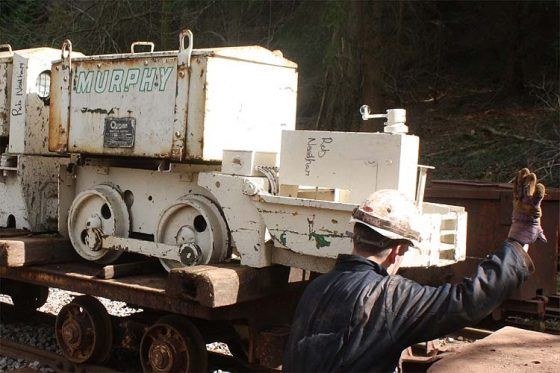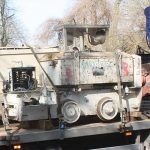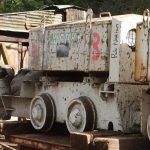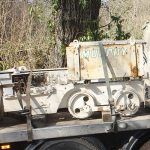Can’t See the Wood for the Trees…
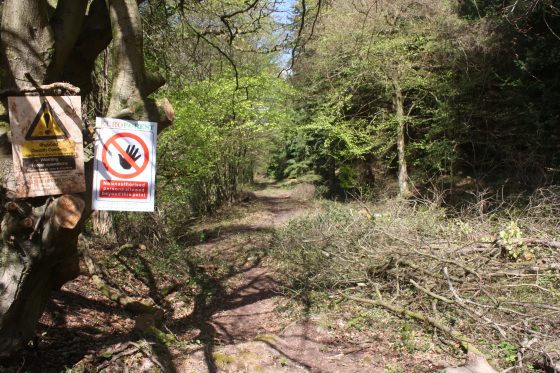
The Forest of Dean has always been a “working forest” and that means at some point something has to be done with all the trees to prevent the whole area reverting back to the wild. To that end, the Forestry Commission has an ongoing programme of thinning out mature trees in order to give the others more room to grow, and also allowing daylight to reach the forest floor which in turn encourages plant growth.
A local contractor has been using the Lea Bailey site as a base for part of this work and the trackbed of the former Mitcheldean Road & Forest of Dean Junction Railway is an ideal roadway to gain access to the woods beyond. Our volunteers have relaid a section of track with steel sleepers and replaced the fishplates with one bolt per pair (compared to the usual four) for ease of removal and re-fitting. This means the large forestry machines can cross the track without causing damage. It will probably prove useful in other ways, for example as a handy unloading point for visiting locomotives at open days.
The Forest of Dean — and indeed the Lea Bailey area — gets a mention in the famous Diary of Samuel Pepys, as this extract from 20th June 1662 shows:
“Up by four or five o’clock, and to the office, and there drew up the agreement between the King and Sir John Winter about the Forest of Dean; and having done it, he came himself (I did not know him to be the Queen’s secretary before, but observed him to be a man of fine parts); and we read it, and both like it well.
That done, I turned to the Forest of Dean, in Speed’s Maps, and there he showed me how it lies; and the Lea-Bayly, with the great charge of carrying it to Lydney, and many other things worth my knowing; and I do perceive that I am very short in my business by not knowing many times the geographical part of my business.”
Our volunteers have not been idle whilst this work was going on (although it was fun to watch the forestry machines at work on our tea breaks) as more progress has been made on the siding. One of the large wagons with side-opening doors has proved useful for ballasting although when fully loaded it is rather heavy! Being somewhat less than fully-charged, our WR5 needed a helping hand on the steepest part of the track. Several large rocks which were getting in the way have been broken into smaller pieces and shifted by rail to a rapidly-growing stack at the end of the line.
